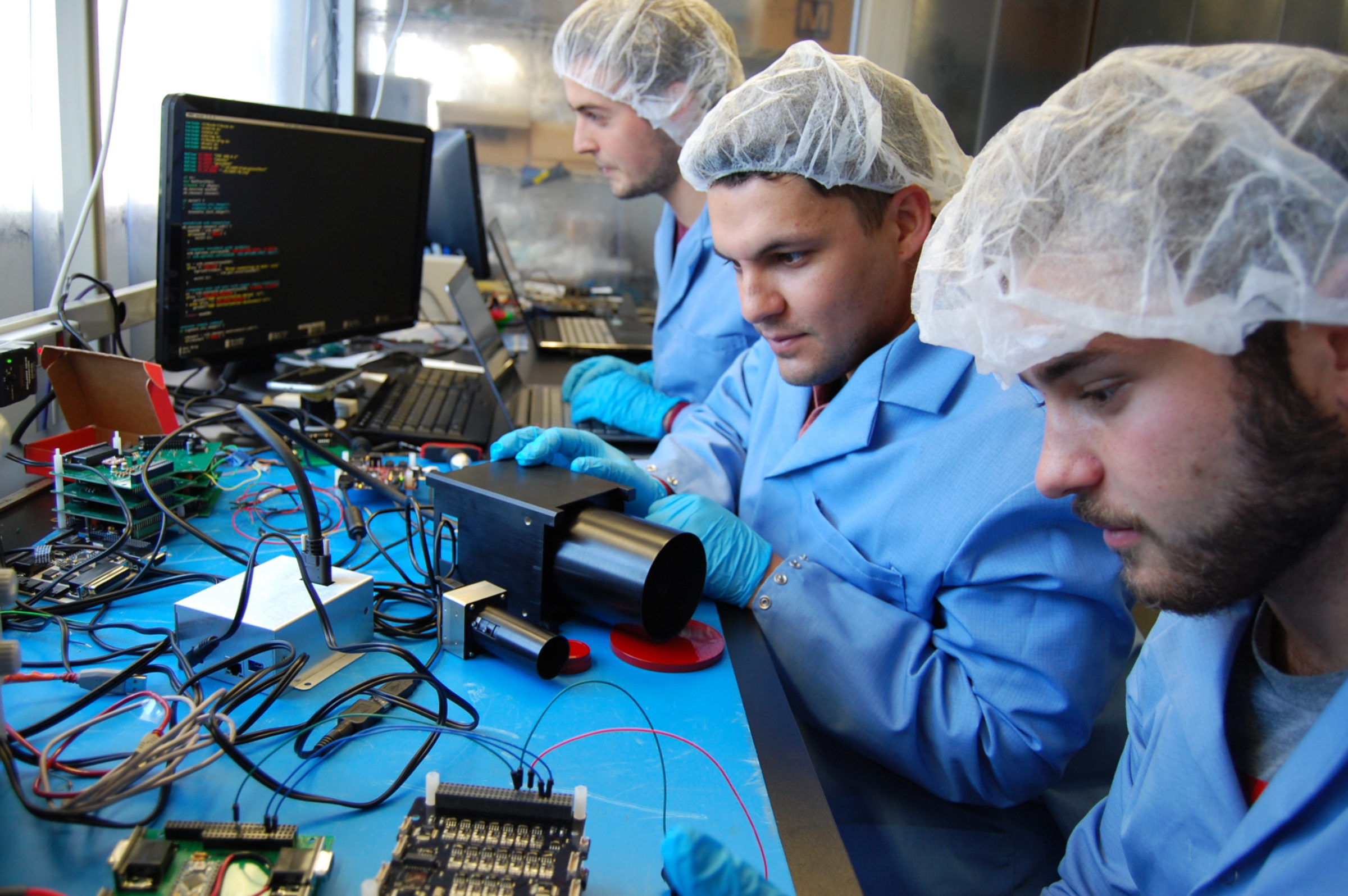Jason Davis • Oct 16, 2015
LightSail and Prox-1 Start Testing and Integration Process
On opposite sides of the United States, teams are starting the testing process to prepare two spacecraft for a one-of-a-kind in-space rendezvous.
In Pasadena, California, The Planetary Society’s LightSail CubeSat sits partially disassembled in the clean room of Ecliptic Enterprises Corporation, as engineers start final hardware testing of the spacecraft’s individual components. From torque rods to batteries, everything must be in working condition before it is installed in the spacecraft chassis.
And at Georgia Tech in Atlanta, student-engineers recently ran checkout tests on the Prox-1 spacecraft’s thermal and visual camera systems. Prox-1 will deploy LightSail and hunt it down 720 kilometers above the Earth, watching as the CubeSat deploys its solar sails.
Subsystem testing kicks off a busy four months for both teams, culminating with the mating of both spacecraft and delivery to the Air Force Research Laboratory in Albuquerque, New Mexico in February 2016. Launch of Prox-1 and LightSail aboard a SpaceX Falcon Heavy rocket from Cape Canaveral, Florida remains on track for September 2016. The early launch date is September 15.

The basic workflow for each spacecraft is the same: Test out individual subsystems, assemble the spacecraft, and perform system-level testing. But the similarities largely end there. Both LightSail and Prox-1 have unique challenges ahead on the schedule.
Ecliptic’s Riki Munakata, LightSail’s integration and testing lead, says the spacecraft’s cameras are being sent home to The Aerospace Corporation for a final firmware upgrade and checkout. This inspection is meant to spot potential image processing problems that were seen during the LightSail-A test mission.
Spacecraft integration and assembly could wrap up as soon as mid-November, when LightSail heads north to Cal Poly San Luis Obispo for full system testing. A vigorous test suite is planned, including communications tests, a trip to the anechoic chamber for radio checks and a boom-only deployment that could occur before Thanksgiving.
Munakata notes any delivery delays for LightSail’s final hardware set—such as the cameras or an all-new payload interface board—could push back the current schedule. But if timelines hold, a full day-in-the-life test may happen before the end of the year. Cal Poly engineers would then integrate LightSail into its P-POD in January, with the spacecraft potentially delivered for integration into Prox-1 that same month.
Meanwhile, next up for Prox-1 are subsystem tests leading up to a pre-integration review in mid-December. Pre-integration review milestones include a cross-campus communications test, a run-through of all spacecraft commands in a flight-like scenario, a solar panel battery charging test, and a day-in-the-life test prior to LightSail installation.
Dave Spencer, the Prox-1 principal investigator and LightSail mission manager, said assembly should wrap up in January. Final system-level testing of both spacecraft at the Air Force Research Laboratory is scheduled for mid-to-late February.
Support our core enterprises
Your support powers our mission to explore worlds, find life, and defend Earth. You make all the difference when you make a gift. Give today!
Donate

 Explore Worlds
Explore Worlds Find Life
Find Life Defend Earth
Defend Earth

